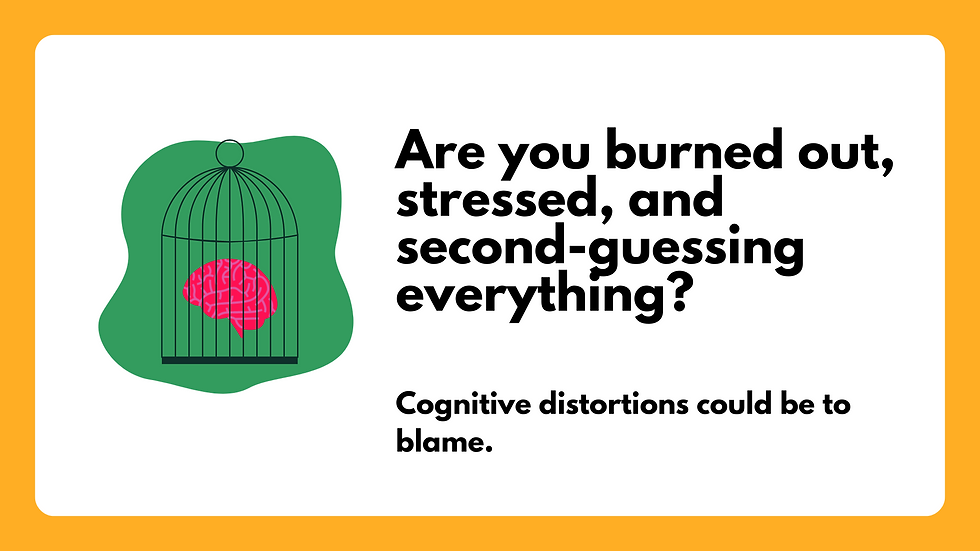After-Hours Messaging and Burnout: What Every Leader Needs to Know
- Jenn DeWall
- Apr 30
- 4 min read

It’s Friday night. You finally sit down to unwind with your favorite show (or maybe just enjoy a little silence), and then—buzz.
Your phone lights up with a “quick” work message.
You don’t respond—because boundaries, right? But your brain? It’s already back in work mode.
I call this working off the clock—when your body is off-duty, but your mind is clocked back in. And spoiler alert: if you’re not getting paid for that time, it shouldn’t be eating up your energy either.
Sound familiar?
You’re not alone. This isn’t just an annoying workplace habit. It’s a major burnout trigger, and most leaders don’t realize the role they’re playing in it.
🔥 The Real Cost of “Just One Quick Message”
Let’s break it down.
A recent study looked at Taiwanese border police and found that when supervisors sent work-related messages outside of work hours, employees’ stress shot up—burnout quickly followed.
Now, I’ve heard it before:“But I tell my team they don’t have to respond right away!”
And my response? No, they don’t know that.
Even if your message says, “No rush,” the fact that it arrived outside of working hours sends a message louder than your words:This is what working here looks like.
That “optional” ping? It’s silently reshaping your team’s understanding of when and how they should be available—even if they’re off the clock.
📊 What the U.S. Research Tells Us
Here are a few stats that might make you want to rethink that after-hours Slack message:
Only 24% of U.S. employees say they never check work email after hours. That means three-quarters of employees are still plugged in during nights, weekends, and days off.
23% admit to sending emails after midnight.
Gen Xers are most likely to send emails in the middle of the night, while nearly half of Millennials say they’ve never sent a work email after 9 p.m.
After-hours messaging is linked to emotional exhaustion, burnout, and increased work-life conflict.
Employees who feel pressure to monitor messages 24/7 report higher stress and significantly lower job satisfaction.
Translation? That “quick note” could be quietly draining your team’s energy, productivity, and mental health—without you even realizing it.
✋ My Wake-Up Call
I’m not just pointing fingers here—I’ve been guilty of this too.
A while back, I caught myself sending an email at 9 p.m. thinking, “It’s fine—I’m just getting ahead!” I even wrote, “No rush—just wanted to share this before I forget.”
But here’s what I didn’t realize: Even when I say there’s no urgency, the message others see is: “Hey, I’m working—should you be too?”
Now, as a Mindset and Mental Health Speaker, I’ve made it a priority to break that cycle. If I want others to protect their peace and boundaries, I have to model that behavior myself—no more midnight messages, no weekend email “brain dumps.”
🧠 Why Boundaries Matter More Than Ever
Our always-on culture may feel productive, but the cost is steep.
When employees feel like they need to be available 24/7, here’s what suffers:
😩 Chronic stress and mental fatigue
🧨 Higher rates of burnout and disengagement
😤 Strained relationships at home and work
👎 Lower creativity and productivity
The truth? Our brains were never meant for nonstop notifications. Recovery isn’t optional—it’s essential.
💡 5 Ways to Combat Burnout from After-Hours Messaging
1. Set (and Respect) Clear Boundaries
Urgent messages should be rare. If it’s not urgent, schedule it to send during work hours. Normalize protected time, and let your team know you mean it. Even better if you can create team norms about messaging hours.
2. Lead by Example
Your habits create your team’s culture. Take time off. Log off. Don’t just say it’s okay—show that it is.
3. Foster a Culture of Support
Burnout isn’t just about workload—it’s about feeling alone in it. Build a culture of real appreciation, connection, and check-ins. Conduct stay interviews, ask your team how they're doing, what's working or what's not working? Have open conversations with them, this is especially important in a hybrid environment where interactions might be limited.
4. Promote Resilience and Recovery
Encourage breaks, hobbies, and mental health days. Offer resilience and stress-management training. Recovery isn’t laziness—it’s leadership. Another quick reminder, if you're not taking breaks or time off, your team will think that's what they're supposed to do too so be sure to lead by example.
5. Equip Your Managers
Your frontline leaders influence how people feel at work. Give them tools to recognize burnout, manage expectations, and lead with empathy. Offer training that can help them talk about mental health and provide resources for them to offer to their team, like Employee Resource Groups, that can help them manage their mental health.
The Bottom Line
After-hours messages might seem harmless, but their cumulative impact on stress, burnout, and disengagement is real.
If we want to build thriving, high-performing teams, we have to start by respecting recovery time like it's part of the job—because it is.
So, leaders—ask yourself:📩 What message are you really sending—literally and figuratively—about work-life boundaries?That answer might be the difference between a thriving team or a team teetering on burnout.
💬 Let’s Work Together
If you want to create a culture that values well-being, resilience, and peak performance without burnout, I can help. I offer:
🔥 Keynotes that inspire action and mindset shifts
💡 Interactive workshops on confidence, mindset, resilience, and burnout recovery
🎯 Executive coaching that helps leaders build emotional intelligence and confidence



Comments